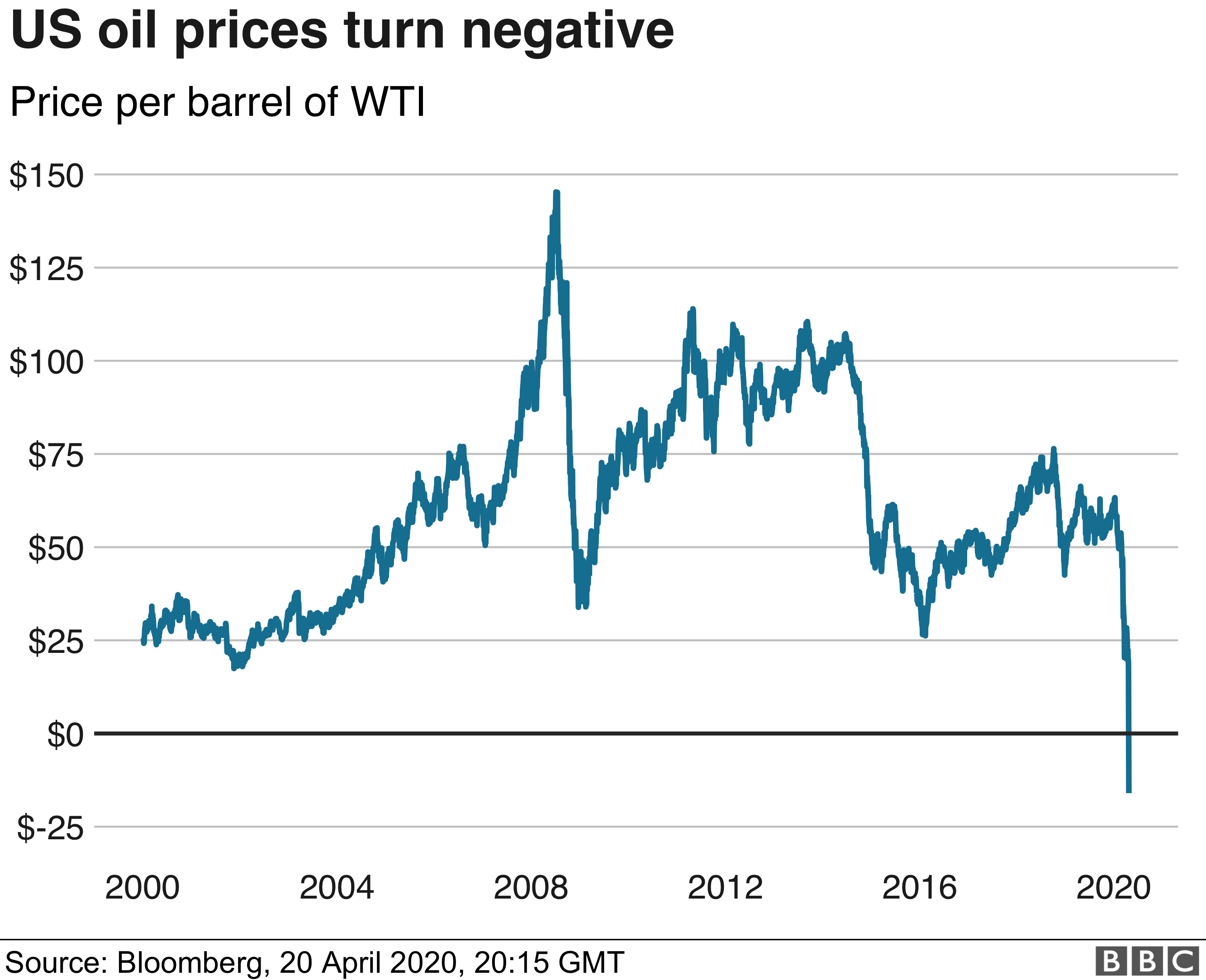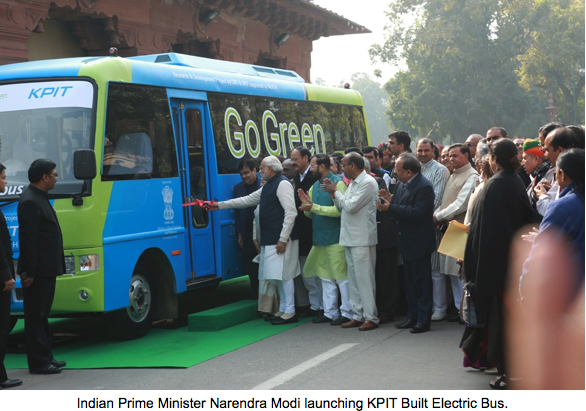With crude oil prices crashing to negative 0, immediate questions are raised about momentum of electric vehicle and effects on cleantech industry. During the peak of 2008 the crude oil was close to $150 which is almost five times today’s prices. Doubters will start to write doomsday stories about electric vehicle and renewable energy in general. But those two markets use totally different form of carbon as energy. Energy and transportation both use carbon as their primary source of fuel but automotive industry is dependent on fossil fuels while energy sector is dependent on coal, natural gas and renewable neergy.
So this drop in crude oil price will have more impact on electric vehicles than on solar/wind power generation.
So this drop in crude oil price will have more impact on electric vehicles than on solar/wind power generation.
Many people have raised the voice for carbon tax as a mitigation of lower crude oil prices but I think we are still far away from getting an agreement on some kind of carbon tax. I totally support it but still think we don’t have correct measuring mechanism to implement that.
I think the discussion has moved from whether electric vehicle is a solution to how to integrate electric vehicles as a solution. With beginning of a new year, war against pollution is gaining momentum. Delhi has started with a positive move to address the desperate situation of air pollution. But more things will be needed to get the pollution down to manageable levels. Low crude oil price has adversely affected the return on investment in electric vehicles. But reduction in battery cost and improved cycle life has reduced the cost of electric vehicle operation. This will help in keeping the momentum going on electric vehicles.
Vehicle pollution is a major contributor to PM2.5 and PM10 pollution. Co2 emissions are important for fighting climate change but immediate issue facing all major cities around the world is PM2.5, PM10, NOx and unburnt fuel emissions. Electric buses have paved the way of electric mobility in China. India can learn a lot from China, India faces similar problems of crowded cities, large number of vehicles getting added on roads every day and reduced quality of life because of pollution.
Indians currently buy more than 200,000 cars a month. That means every year we are adding 2.4 million cars on roads. Number of motorcycles will be almost two times that number. India also faces unique challenge of old buses and trucks still running on road. Indian government has started FAME India scheme that will encourage electric vehicles. Making a dent in sale of gasoline cars is going to be a challenge as electric vehicle charging infrastructure is almost non-existent. Launching an electric bus project in parliament is a great start as it gives a much needed publicity to electric vehicle market.
I think the discussion has moved from whether electric vehicle is a solution to how to integrate electric vehicles as a solution. With beginning of a new year, war against pollution is gaining momentum. Delhi has started with a positive move to address the desperate situation of air pollution. But more things will be needed to get the pollution down to manageable levels. Low crude oil price has adversely affected the return on investment in electric vehicles. But reduction in battery cost and improved cycle life has reduced the cost of electric vehicle operation. This will help in keeping the momentum going on electric vehicles.
Vehicle pollution is a major contributor to PM2.5 and PM10 pollution. Co2 emissions are important for fighting climate change but immediate issue facing all major cities around the world is PM2.5, PM10, NOx and unburnt fuel emissions. Electric buses have paved the way of electric mobility in China. India can learn a lot from China, India faces similar problems of crowded cities, large number of vehicles getting added on roads every day and reduced quality of life because of pollution.
Indians currently buy more than 200,000 cars a month. That means every year we are adding 2.4 million cars on roads. Number of motorcycles will be almost two times that number. India also faces unique challenge of old buses and trucks still running on road. Indian government has started FAME India scheme that will encourage electric vehicles. Making a dent in sale of gasoline cars is going to be a challenge as electric vehicle charging infrastructure is almost non-existent. Launching an electric bus project in parliament is a great start as it gives a much needed publicity to electric vehicle market.
Electric bus provides a great use case. The routes are fixed, the buses are parked in defined spots in depots. This will enable setting up a charging infrastructure and reduce major contribution of Diesel emissions of NOx, PM2.5 and PM10 emissions.
Although diesel prices have reduced, electric buses are still cost effective as kmpl of average city bus with lot of stop and go traffic condition is very low. Using electric buses as a starting point helps in two ways. One, it introduces electric vehicle technology to masses. People who cannot afford to buy a car or two wheeler can still experience electric vehicles and second, it will eliminate cars on roads. A bus carrying 40 people can reduce 10 cars from road. So deploying electric buses will add double benefit to fight against pollution.
Low crude oil price may not last for long as it's a very cyclical industry. Government should take advantage of money saved on importing crude oil and invest almost all of it in renewable energy and electric vehicles. India currently imports more than 3.2 million barrels of crude oil per day. With this reduction in crude oil price, India is saving $30 billion in spending. That is a massive amount of money. Instead of letting it pass on to consumers, Government can easily spend that money on long term strategic investments like Solar Power and Electric vehicle charging infrastructure. Even though the crude oil price is at $30 per barrel, we should not forget that fossil fuel is limited resource and price of that commodity will surely increase when demand meets the production capacity.
So governments all across the world should think of this dip in crude oil price as great investment opportunity in renewable energy and electric vehicle infrastructure. Money not sent to oil producing countries can be deployed in securing long term energy access for poor. We have to look at the dip in crude oil price as an opportunity to invest money in securing future energy and double down on fight against pollution.
Although diesel prices have reduced, electric buses are still cost effective as kmpl of average city bus with lot of stop and go traffic condition is very low. Using electric buses as a starting point helps in two ways. One, it introduces electric vehicle technology to masses. People who cannot afford to buy a car or two wheeler can still experience electric vehicles and second, it will eliminate cars on roads. A bus carrying 40 people can reduce 10 cars from road. So deploying electric buses will add double benefit to fight against pollution.
Low crude oil price may not last for long as it's a very cyclical industry. Government should take advantage of money saved on importing crude oil and invest almost all of it in renewable energy and electric vehicles. India currently imports more than 3.2 million barrels of crude oil per day. With this reduction in crude oil price, India is saving $30 billion in spending. That is a massive amount of money. Instead of letting it pass on to consumers, Government can easily spend that money on long term strategic investments like Solar Power and Electric vehicle charging infrastructure. Even though the crude oil price is at $30 per barrel, we should not forget that fossil fuel is limited resource and price of that commodity will surely increase when demand meets the production capacity.
So governments all across the world should think of this dip in crude oil price as great investment opportunity in renewable energy and electric vehicle infrastructure. Money not sent to oil producing countries can be deployed in securing long term energy access for poor. We have to look at the dip in crude oil price as an opportunity to invest money in securing future energy and double down on fight against pollution.


